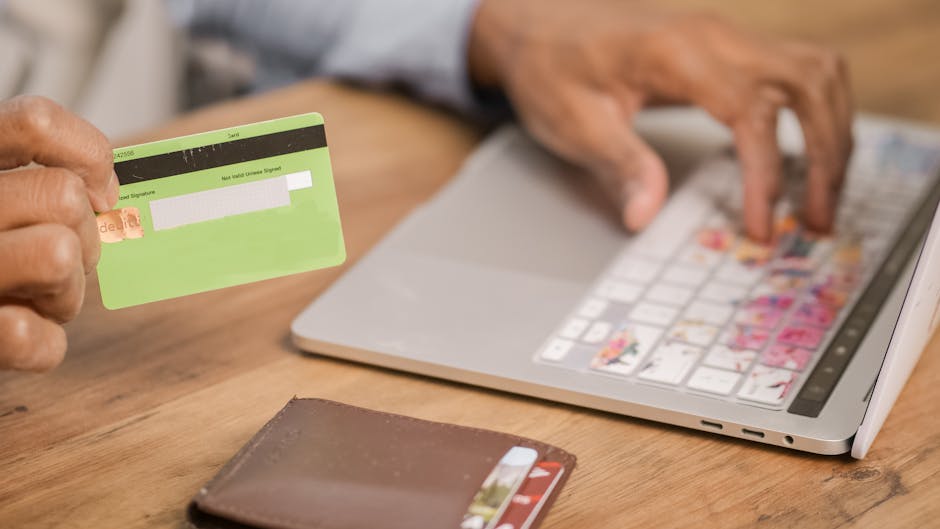Tips for Secure Online Shopping: A Comprehensive Guide
Welcome to the digital age, where everything from groceries to gadgets can be purchased with just a few clicks. Online shopping has revolutionized the way we shop, offering convenience, variety, and competitive prices. However, with this convenience comes the risk of cyber threats and scams that can compromise your personal and financial information. In this comprehensive guide, we will delve into the world of secure online shopping and provide you with essential tips to protect yourself while shopping online.
The Rise of Online Shopping

Online shopping has witnessed exponential growth in recent years, with more and more consumers turning to e-commerce platforms for their shopping needs. According to Statista, global e-commerce sales are projected to surpass $4.2 trillion by 2020. This rapid expansion has also attracted cybercriminals who are constantly devising new ways to steal sensitive information such as credit card details and personal data.
Understanding the Risks

Before we delve into the tips for secure online shopping, it is crucial to understand the various risks associated with online shopping. Some of the common threats include:
- Phishing Attacks: Cybercriminals often use fake emails or websites to trick users into revealing their personal information.
- Malware: Malicious software can infect your device and steal your data without your knowledge.
- Unsecured Websites: Shopping on unsecured websites can expose your sensitive information to hackers.
- Data Breaches: Companies may suffer data breaches, resulting in the exposure of customer data.
By being aware of these risks, you can take proactive steps to protect yourself while shopping online.
Tips for Secure Online Shopping

1. Shop from Secure Websites

When shopping online, make sure to only purchase from websites that have a secure connection. Look for websites that start with ‘https://’ and display a padlock symbol in the address bar. This indicates that the website encrypts data transmitted between your browser and the website’s server, making it difficult for hackers to intercept.
2. Use Strong and Unique Passwords
One of the simplest yet most effective ways to secure your online shopping accounts is by using strong and unique passwords. Avoid using easily guessable passwords such as ‘123456’ or ‘password’. Instead, create complex passwords that include a combination of letters, numbers, and special characters. Additionally, use a different password for each online account to prevent a single breach from compromising all your accounts.
3. Enable Two-Factor Authentication
Two-factor authentication adds an extra layer of security to your online shopping accounts by requiring two forms of verification to log in. This typically involves entering a password and a unique code sent to your mobile device. By enabling two-factor authentication, you can significantly reduce the risk of unauthorized access to your accounts.
4. Update Your Devices and Software Regularly
Keeping your devices and software up to date is essential for protecting your personal information while shopping online. Updates often include security patches that address vulnerabilities that cybercriminals may exploit. Set your devices and applications to automatically update to ensure you are always protected against the latest threats.
5. Be Wary of Suspicious Emails and Links
Phishing attacks are a common method used by cybercriminals to steal sensitive information from unsuspecting users. Be cautious of emails that ask you to click on suspicious links or provide personal information. Avoid sharing sensitive data via email and always verify the legitimacy of the sender before responding to any requests.
6. Use Secure Payment Methods
When making online purchases, opt for secure payment methods such as credit cards or digital wallets. These payment methods offer additional layers of protection, such as fraud monitoring and buyer protection programs. Avoid using debit cards or direct bank transfers, as these methods may not offer the same level of protection against fraudulent transactions.
7. Monitor Your Accounts Regularly
It is essential to regularly monitor your online shopping accounts for any unauthorized activity. Check your transaction history for any unfamiliar charges and report them immediately to your bank or credit card issuer. By staying vigilant, you can detect and address any suspicious activity before it escalates.
Common Misconceptions
One common misconception about online shopping security is that only large retailers are targeted by cybercriminals. In reality, small and medium-sized businesses are also at risk of cyber attacks. It is essential for all online shoppers to follow best practices for secure online shopping, regardless of the size of the retailer.
Conclusion
As online shopping continues to gain popularity, it is crucial for consumers to prioritize security and protect themselves from cyber threats. By following the tips outlined in this guide, you can shop online with confidence and reduce the risk of falling victim to scams and fraud. Remember, staying informed and proactive is the key to safe and secure online shopping.
Whether you’re buying the latest tech gadget or shopping for everyday essentials, practicing safe online shopping habits is essential in today’s digital landscape. By implementing the tips discussed in this guide, you can safeguard your personal and financial information and enjoy a worry-free online shopping experience.




